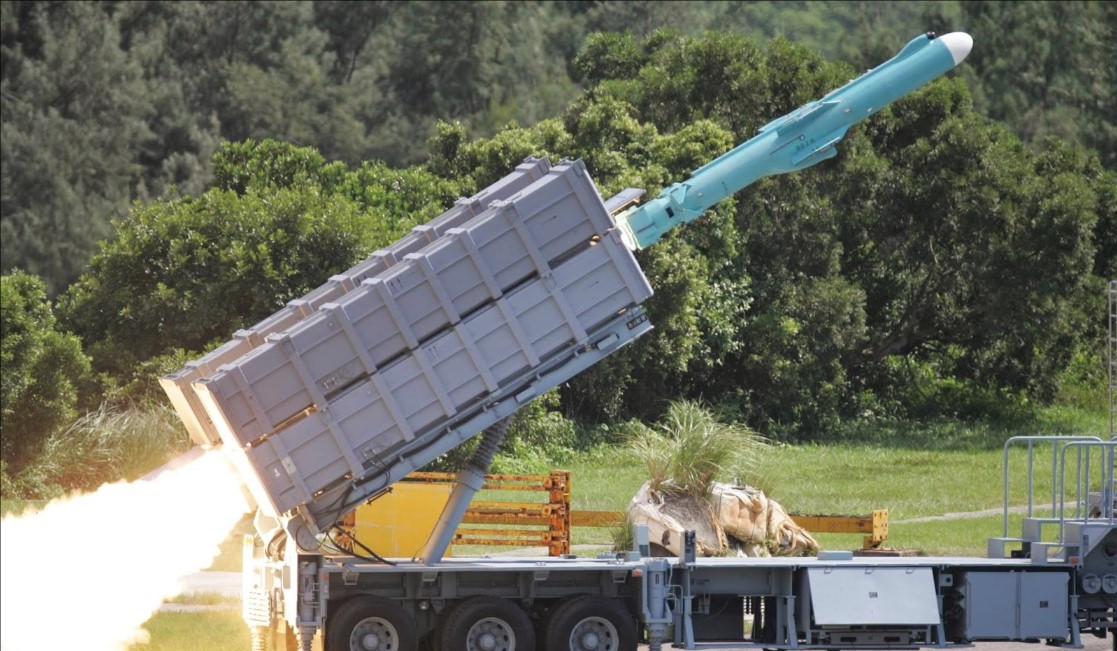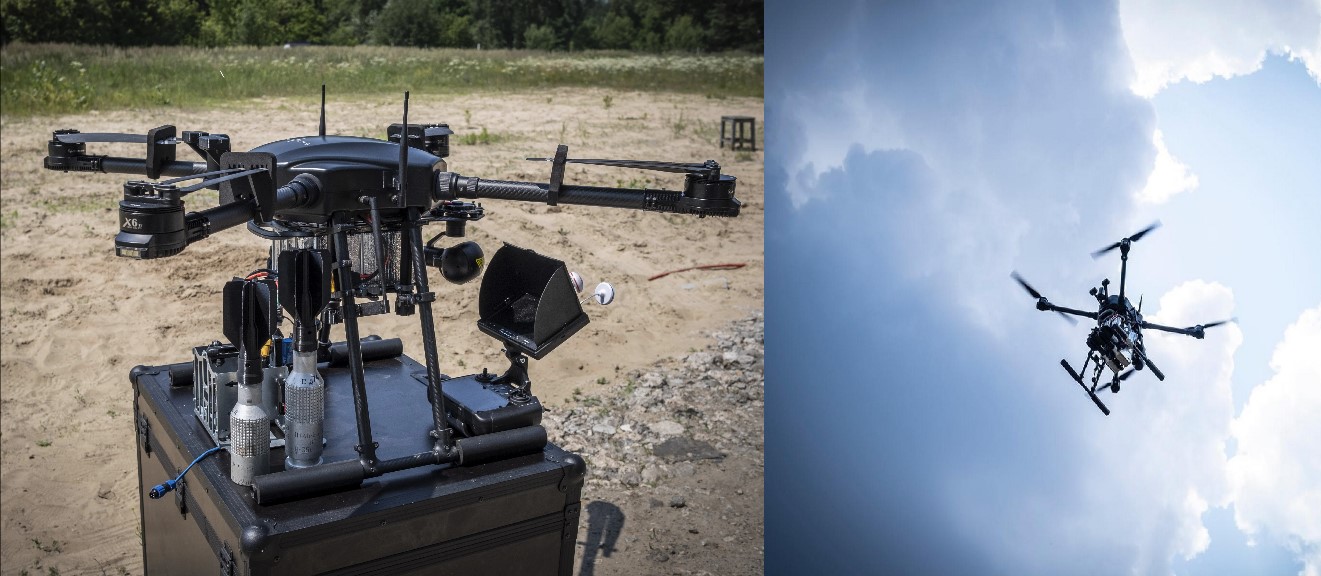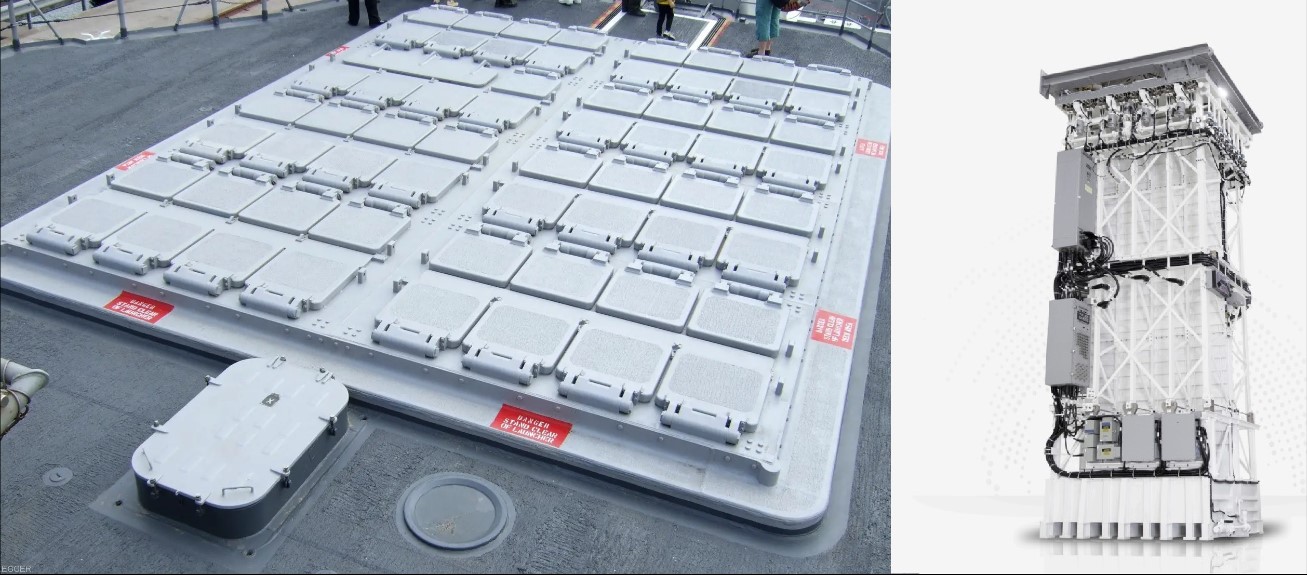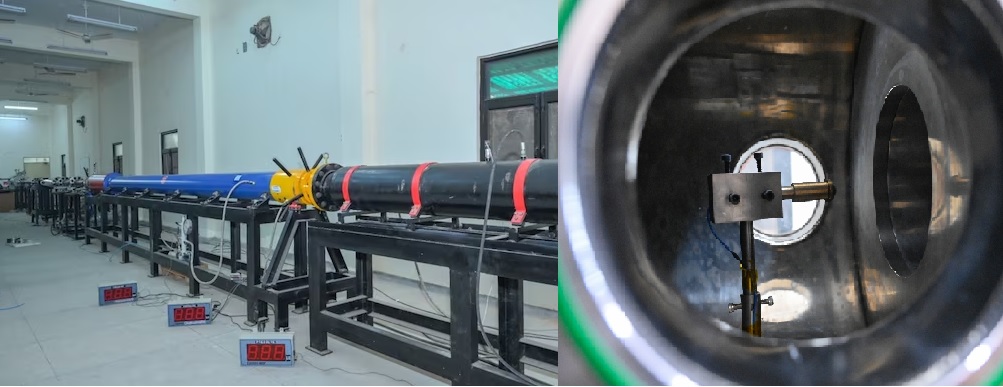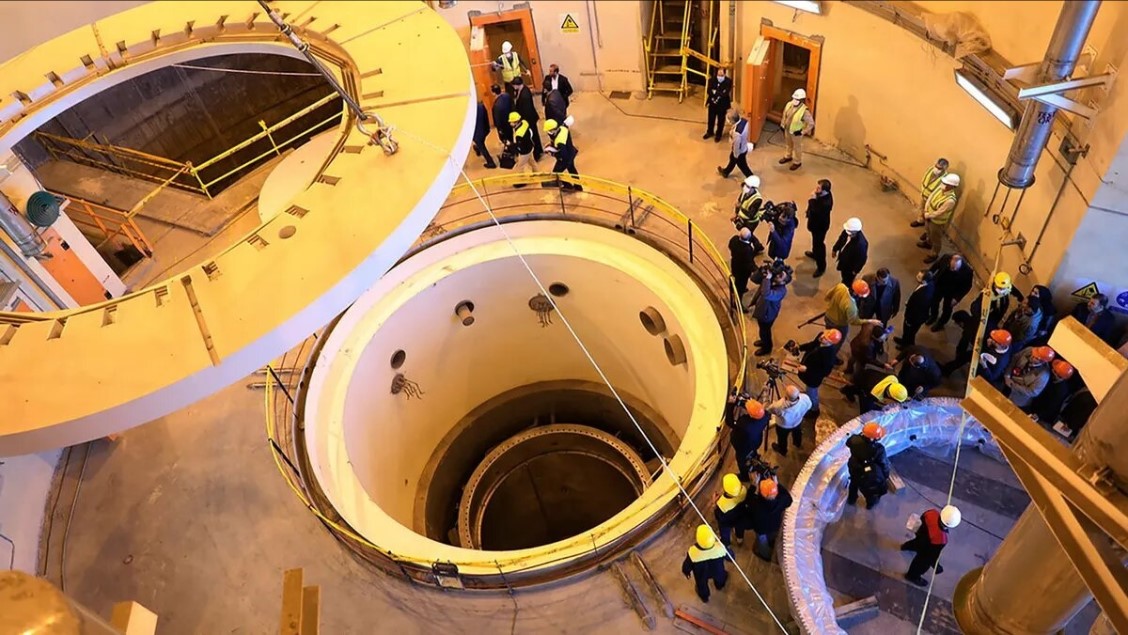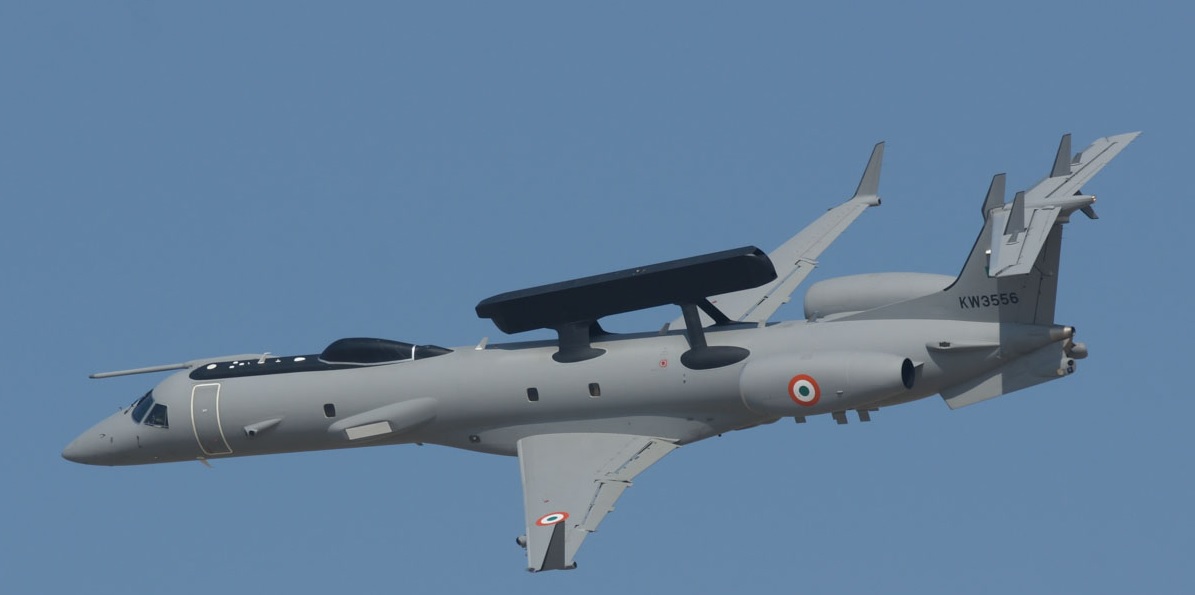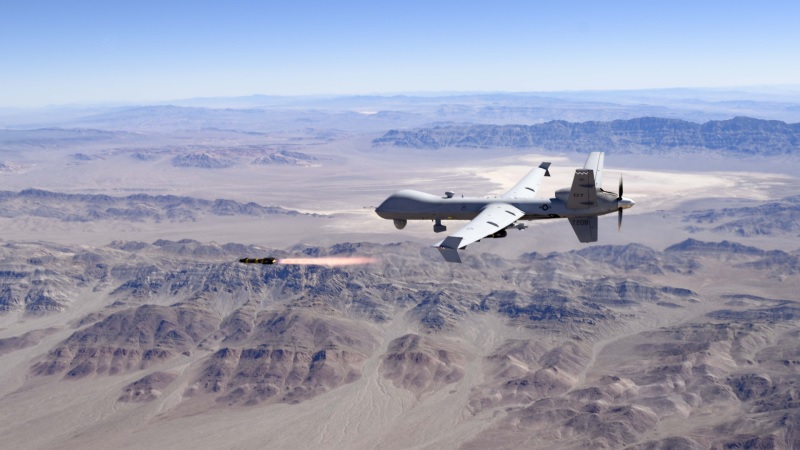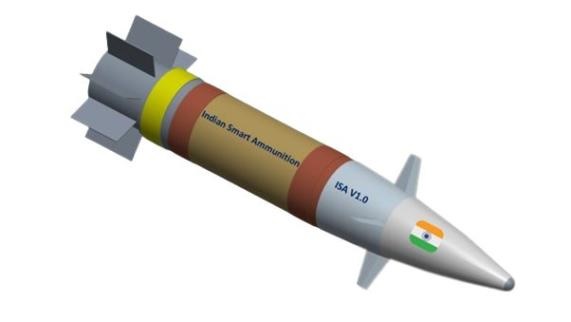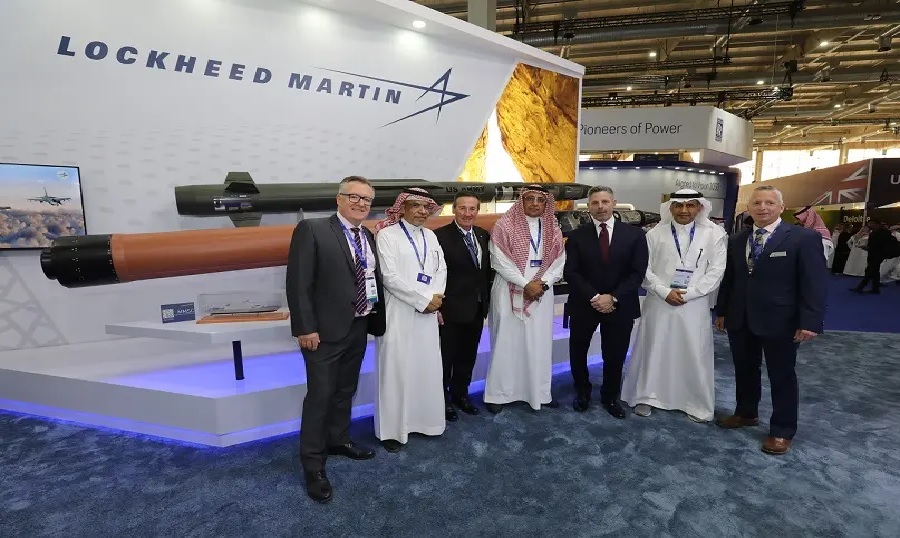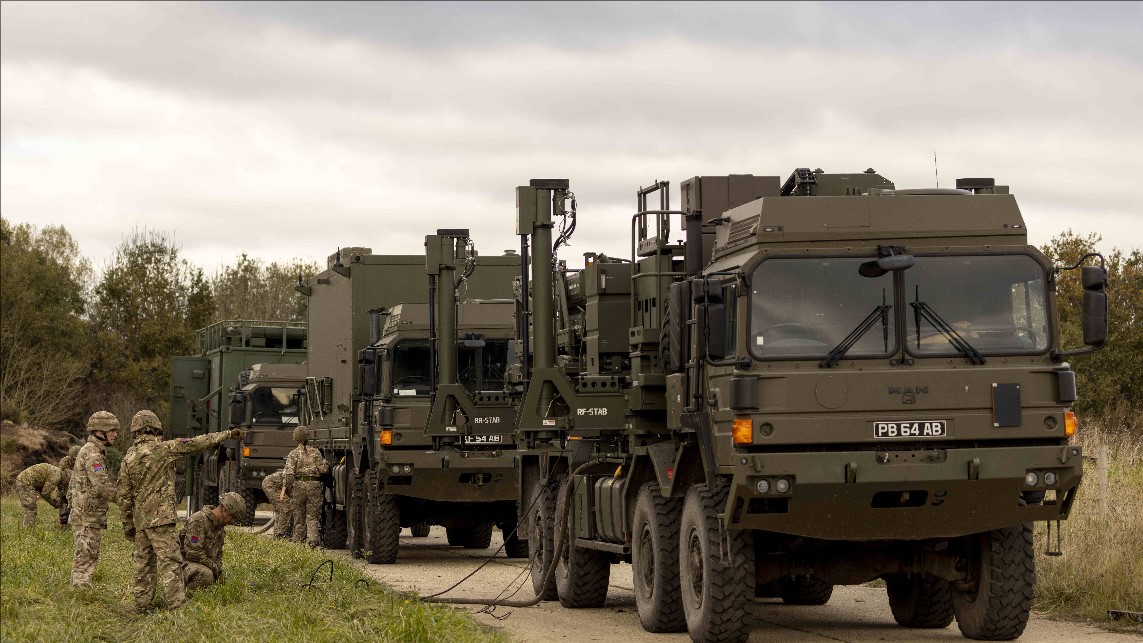World
Defense News ,Taiwan & China :- In August 2023, Taiwan tested a new missile, the Hsiung Feng IIE, with a range of 1,200 kilometers. This means it can reach deep into China, according to Taiwanese reports.However, Chinese media, in the Ordnance Industry Science Technology magazine, criticized the missile. They said it's big, not very fast, and lacks stealth technology, making it easy to detect with advanced radar. The report also claimed that China's military can intercept the missile because Taiwan has limited abilities in guiding it during its journey.Some believe that China's criticism might be a tactic to undermine confidence in Taiwan's military. Last year, Chinese researchers claimed they could destroy a US Navy aircraft carrier group supporting Taiwan with just 24 hypersonic anti-ship missiles. Taiwan dismissed this as psychological warfare.The negative comments from Chinese media about Taiwan's missile suggest that China is closely watching Taiwan's military developments. Business Insider suggests that China is likely monitoring any advanced weapons that could defend against an invasion or effectively strike the mainland.China is also keeping an eye on US arms sales to Taiwan, stating in November 2023 that the island nation is becoming a "powder keg."
Read More → Posted on 2024-02-06 16:25:27World
Defense News ,Israel Hamas war :- As the conflict between Israel and the Hamas terror organization in Gaza, mounting evidence points to Iran as the primary source of weapons deployed against the Israeli Defence Force (IDF).According to a recent report from the Israeli Alma Research and Education Center, an Iranian-made weapon, identified as a new version of the RPG, has surfaced in the hands of Hamas. Analysts Yair Ansbacher and Yishay Armoni reveal that during the ongoing war, the IDF encountered a previously unknown weapon known as the TBG, directly supplied to Hamas from Iran and bearing a Persian inscription.The TBG, designed for use with a Soviet RPG-7 launcher, features a warhead apparently manufactured in Iran. The report notes that while externally resembling the familiar tandem (PG-7R) warhead of the RPG-7, a closer inspection reveals a distinct weapon. The rear of the warhead mirrors the Russian TBG-7 thermobaric warhead, introduced in 1999, combined with the front part of the Tandem warhead (PG-7R).Stored in a designated sealed PVC pipe for protection against wear and corrosion, the warhead maintains secrecy. Many such pipes, bearing the logo of Hamas' military wing and painted in camouflage colors, were discovered scattered throughout the Gaza Strip envelope after an invasion by Hamas terrorists on October 7, 2023.The TBG warhead consists of two parts: a small hollow charge for light armor penetration and a larger thermobaric (fuel-air) charge with a 105 mm diameter. This combination enables the weapon to penetrate exterior armor and walls, causing a burning effect and increased air pressure upon explosion.Effective against light armored vehicles, infantry, and civilians in buildings and behind cover, the TBG is less effective against heavy armored vehicles with closed hatches due to the small hollow charge. According to Hamas' November 2023 video, the weapon has a 105 mm caliber, a 100-meter effective range, and weighs 4.5 kg, identical to the TBG-7V.Hamas emphasizes the TBG's purpose against buildings and fortifications, capable of penetrating walls and exploding behind them. Its presence in the Gaza Strip suggests potential use by Hezbollah in the Lebanese arena, given their extensive RPG-7 launcher arsenal. While it remains unclear if Hezbollah is independently developing the TBG, the likelihood is higher compared to Hamas.
Read More → Posted on 2024-02-06 16:18:04India
Defense News ,India :- In a recent update, the police in New Delhi have successfully arrested a key suspect wanted in the dismantled terror module case in Jammu and Kashmir's Kupwara district. The apprehended individual, Riyaz Ahmed, a retired soldier residing near the Line of Control, was taken into custody at the New Delhi Railway station on Sunday.According to the Delhi police, Riyaz Ahmed played a crucial role in conspiring with Khursheed Ahmad Rather and Ghulam Sarwar Rather, both already arrested by J&K Police on January 27. Their collaboration involved receiving weapons and ammunition from across the Line of Control through terrorist handlers.The joint efforts of J&K Police and the Army on January 27 led to the arrest of five associates of Lashkar-e-Toiba militants involved in arms and ammunition smuggling in Kupwara district. The terrorist module was being directed by handlers based in Pakistan occupied Kashmir, Manzoor Ahmad Sheikh alias Shakoor, and Qazi Mohammad Khushal, operating from across the border.On February 4, specific information was received regarding the fugitive Riyaz Rather, prompting the immediate deployment of a police team at the New Delhi Railway Station. Acting swiftly, the alert staff identified and apprehended Riyaz as he attempted to escape from Exit Gate no 1 during the early morning hours.After intensive interrogation, it was revealed that Riyaz and his friend Altaf, both retired from the Indian Army, had boarded the Mahakaushal Express from Jabalpur and arrived at Hazarat Nizamuddin railway station on February 3. The accused was about to relocate to another hideout when apprehended.Riyaz is suspected of receiving a consignment of arms and ammunition from the previously arrested Khursheed Ahmad Rather and Ghulam Sarwar Rather. The police recovered a mobile phone and a SIM card from Riyaz's possession. He has been arrested under appropriate legal sections, and J&K Police officials have been informed for further action. The investigation is ongoing to uncover the entire conspiracy.
Read More → Posted on 2024-02-06 16:09:19World
Defense News ,Ukraine :- Ukraine's tech company, SkyLab UA, has made a cool drone called Shoolika mk6. It's great for hitting targets with super accuracy, especially at night. The Digital Minister of Ukraine, Mykhailo Fedorov, shared this exciting news.This drone is special because it can see really well in the dark and fly up to 10 kilometers carrying stuff that weighs up to 6 kilograms. The people who made it focused a lot on making sure it moves exactly how they want it to.The Shoolika mk6 is getting even better. NATO is giving it a special code, and it's getting updates in smart technology and camera stuff. These changes will make it even smarter and better at hitting targets on its own. All of this is happening to make Ukraine's defense and tactical operations stronger.
Read More → Posted on 2024-02-06 16:03:49World
Defense News ,Poland :- Lockheed Martin and the Polish Armaments Group (PGZ) have joined forces to provide MK 41 Vertical Launch Systems for three new Polish Navy frigates. The agreement also includes obtaining Extensible Launch System modules for the Common Anti-Air Modular Missile family.These missile systems, acquired through a Direct Commercial Sale, will be installed on Poland's upcoming MIECZNIK-class frigates, set to be in service by 2029. Each frigate will be equipped with four launchers containing eight chambers each.The MK 41 VLS is widely used in NATO fleets and can be adapted to work with various missiles, such as the Evolved Sea Sparrow, Tomahawk Cruise Missile, Standard Missile 2, Standard Missile 3, Standard Missile 6, and Vertical Launch ASROC weapons.The MIECZNIK-class frigate program, initiated under an 8-billion Polish zloty ($1.9-billion) contract in 2021, is a crucial part of Poland's efforts to modernize its naval capabilities. These frigates are designed to reach speeds exceeding 28 knots (32 miles/52 kilometers per hour) and cover an impressive endurance of 9,000 nautical miles (10,000 miles/17,000 kilometers). The first frigate of this class is currently under construction at the Polish Navy Shipyard in Gdynia, northern Poland.
Read More → Posted on 2024-02-06 15:58:43India
Defense News ,India :- India is taking steps to secure its 1,643-kilometer border with Myanmar by building a fence similar to the one it has along its border with Bangladesh. Union Home Minister Amit Shah shared this decision during his visit to Assam, highlighting the government's commitment to national security. In addition to fortifying the border, Shah mentioned the end of the free movement agreement with Myanmar, signaling a significant change in the region.Shah revealed the ambitious plan to fence the entire Indo-Myanmar border, adopting security measures already in place along the Bangladesh frontier. The goal is to improve surveillance and prevent unauthorized crossings. Initial efforts have started, with a 10-kilometer stretch in Moreh, Manipur, already fenced. Pilot projects using a Hybrid Surveillance System (HSS) are also underway in Arunachal Pradesh and Manipur, aiming to enhance border security.Ending Free Movement AgreementIndia plans to cancel the free movement agreement with Myanmar, which allowed residents along the border to travel up to 16 kilometers into each other's territory without visas. Shah emphasized the need for stricter border controls, though Mizoram Chief Minister Lalduhoma disagreed, citing historical and cultural ties between Mizos and Chins across the border.Security Concerns and Regional ChangesThe decision to fortify the Indo-Myanmar border comes as conflicts and ethnic tensions in the region escalate. Recent events, such as the military coup in Myanmar and ethnic violence in Manipur, highlight the importance of increased security measures. However, experts caution against potential destabilization and strained relations.The proposed border fence faces challenges due to the rugged terrain, and concerns have been raised about its impact on local communities and cross-border ties. Critics question the security justifications, suggesting alternative motives behind the initiative.India's decision reflects changing security priorities and regional dynamics. While the move aims to enhance national security, it brings complexities and controversies. Stakeholders must carefully consider the implications on bilateral relations and local populations as plans for border fortification progress.The Modi government is committed to building impenetrable borders.It has decided to construct a fence along the entire 1643-kilometer-long Indo-Myanmar border. To facilitate better surveillance, a patrol track along the border will also be paved.Out of the total border length,…— Amit Shah (@AmitShah) February 6, 2024
Read More → Posted on 2024-02-06 15:53:00India
Defense News ,India :- In a significant event showcasing India's growing strength in defense, Union Minister Ajay Bhatt, along with Ambassador Dr. Suhel Ajaz Khan and Additional Secretary Anurag Bajpai, received a warm welcome at the BrahMos Pavilion in Riyadh's WORLD DEFENSE SHOW 2024. Hosted by Dr. Sanjeev Kumar Joshi and Praveen Pathak from BrahMos, the visit marked an important moment in India's efforts to export defense technology.High-ranking officials highlighted the importance India places on strengthening its defense capabilities and building stronger ties in the Middle East. The BrahMos Pavilion demonstrated India's dedication to innovation and collaboration in defense technology, specifically in cruise missile systems.The visit not only showcased India's technological progress but also emphasized its proactive approach in promoting defense cooperation with Middle Eastern nations. India's offer of BrahMos Cruise missiles to several countries in the region signals a strategic shift in its defense export policy, aiming to enhance regional security.The BrahMos Cruise missile, known for its speed, precision, and versatility, is a game-changer in modern warfare. Its ability to accurately strike targets from land, sea, and air platforms makes it highly sought-after for nations looking to strengthen their military capabilities.
Read More → Posted on 2024-02-06 15:47:00India
Defense News ,India :- IIT Kanpur has accomplished a significant feat by creating and testing India’s inaugural Hypervelocity Expansion Tunnel Test Facility. This accomplishment places India among the select few nations possessing advanced hypersonic testing capabilities.The facility, known as S2 or 'Jigarthanda,' is situated at IIT-Kanpur’s Hypersonic Experimental Aerodynamics Laboratory. It spans 24 meters and has the capability to simulate flight speeds ranging from 3 to 10 kilometers per second. This simulation mimics hypersonic conditions faced by vehicles during atmospheric entry, asteroid entry, scramjet flights, and ballistic missiles.S2's successful development is a result of three years of indigenous design and development, with financial support from the Aeronautical Research and Development Board (ARDB), the Department of Science and Technology (DST), and IIT-Kanpur. This facility will play a crucial role in supporting ongoing projects of ISRO and DRDO, such as Gaganyaan, RLV, and hypersonic cruise missiles.Professor S. Ganesh, Director of IIT-Kanpur, expressed the historical significance of this achievement, stating that S2 will empower India's space and defense organizations with domestic hypersonic testing capabilities for critical projects and missions.Professor Mohammed Ibrahim Sugarno, Associate Professor at the Department of Aerospace Engineering and Centre for Lasers & Photonics at IIT-Kanpur, highlighted the challenges faced during the development of S2, particularly in perfecting the 'free piston driver' system. Despite the difficulties, the team overcame these challenges and proudly designed, built, and tested this unique facility, solidifying India's position in the global hypersonic research community.Professor GM Kamath, Head of the Department of Aerospace Engineering at IIT-Kanpur, emphasized the significance of S2 in advancing research horizons and inspiring a new generation of aerospace enthusiasts. Being the first in India to develop such a facility sets a new benchmark for hypervelocity research in the country and beyond.
Read More → Posted on 2024-02-06 15:40:18India
Defense News ,India :- In a recent update, Lieutenant General Upendra Dwivedi has been chosen as the new Army Vice Chief, starting from February 15. He will be replacing Lt Gen MV Suchindra Kumar, who, in turn, will assume the role of the Northern Army Command in Udhampur.The Army made these announcements today, and both officers are set to begin their new roles on February 15, according to Army officials.Lt Gen. Dwivedi, previously at the Army Headquarters as the Deputy Chief and Director General of Infantry, has experience in the Northern Command during a period of heightened tensions between India and China. He served there for two years.Meanwhile, Lt Gen. Kumar, who has been Vice Chief for about a year, earned the promotion to the rank of Army Commander. He previously served as the 16 Corps commander and held various command and staff positions.
Read More → Posted on 2024-02-06 07:15:43India
Defense News ,India :- National Security Advisor (NSA) Ajit Doval recently visited Dhaka quietly and briefly over the weekend. He met with Prime Minister Sheikh Hasina and other senior officials to talk about important strategic issues. This visit marked the first time a high-ranking Indian official visited Dhaka since Hasina returned to power for the fifth time. The Bangladesh foreign minister is also expected to visit India later this week.Even though the details of Doval's visit are not yet known, it is believed that he discussed regional dynamics and important aspects of the relationship between the two countries. Key topics on the agenda likely included counterterrorism, security in the Bay of Bengal, and strengthening security partnerships.It's important to note that Prime Minister Narendra Modi was the first leader to congratulate Hasina on her victory in the general elections earlier this year. Ajit Doval plays a crucial role in India's connections with neighboring countries, and he is particularly interested in ensuring the stability of Bangladesh, as it is vital for India's security in the subcontinent. Additionally, Bangladesh serves as a crucial link for connectivity to India's landlocked northeast region.
Read More → Posted on 2024-02-06 07:12:03World
Defense News ,Iran :- Iran announced on Monday the commencement of the construction of a nuclear research reactor in Isfahan, shortly after revealing plans for a nuclear power plant complex in the southern region.Mohammad Eslami, the head of the Atomic Energy Organisation of Iran, confirmed the initiation of the reactor's foundation work at the Isfahan site. The Isfahan nuclear research center, already hosting three reactors, is set to welcome a new 10-megawatt research reactor aimed at establishing a robust neutron source, as reported by the state media IRNA.The multifaceted applications of the new reactor include conducting fuel and nuclear material tests, as well as producing industrial radioisotopes and radiopharmaceuticals, according to IRNA.Despite facing stringent US sanctions since 2018, Iran remains steadfast in its pursuit of nuclear advancements. Following the withdrawal from the nuclear deal by former US President Donald Trump, Iran has consistently maintained that its nuclear activities are exclusively peaceful, denying any intention to develop nuclear weapons.Rafael Grossi, the director general of the UN's International Atomic Energy Agency (IAEA), expressed frustration in January over Iran's perceived limitations in cooperating with the agency. However, Iran continues to assert its commitment to peaceful nuclear pursuits.In a strategic move, Mohammad Eslami declared the construction of a nuclear power plant complex in Sirik, situated on the Strait of Hormuz, featuring four individual plants with a combined production capacity of 5,000 megawatts. Eslami outlined an ambitious goal, aiming for a national nuclear power production capacity of 20,000 megawatts by 2041 during a regional trip with Iranian President Ebrahim Raisi.The Sirik nuclear plants are anticipated to be fully operational by 2031, according to IRNA. Presently, Iran's only operational nuclear power plant, located in Bushehr, has a capacity of 3,000 megawatts. Achieving the 20,000 megawatt goal would place Iran among a select group of countries, including the United States, France, China, Russia, and South Korea, with such substantial nuclear capacity installations.
Read More → Posted on 2024-02-06 07:08:29India
Defense NEws ,India :- In response to the evolving air surveillance capabilities of China and Pakistan, India is set to expand its airborne early-warning and control (AEW&C) aircraft fleet with the development and introduction of 12 additional units, as reported by the Times of India. This strategic initiative aims to bolster surveillance and detection along the borders with China and Pakistan, while also facilitating the guidance of friendly aircraft during aerial engagements.The Defence Research and Development Organisation (DRDO) and the Indian Air Force (IAF) are collaboratively working on the creation of six Mark-1A and six Mark-2 versions of the Netra AEW&C aircraft. The Netra-I Airborne Early Warning and Control aircraft program, based on Brazilian Embraer aircraft, is also being revived by the IAF.The decision to augment the AEW&C fleet was prompted by the IAF's realization of the need for more such aircraft during an aerial skirmish with Pakistani fighters in February 2019. The ongoing tensions with China in eastern Ladakh further underscored the importance of strengthening India's AEW&C capabilities.The planned aircraft, based on Brazilian Embraer jets, will feature advanced active electronically scanned array antenna-based radars and sophisticated electronic and signal intelligence systems, amounting to an estimated cost of approximately Rs 9,000 crore.The ongoing development includes six Mark-2 aircraft, equipped with larger and more capable AEW&C radars and sensors. These will be mounted on second-hand Airbus-321 planes acquired from Air India, with the project currently progressing at a cost of ₹10,990 crore. The first AEW&C Mark-2 aircraft is expected to be delivered in 2026-27, featuring a 300-degree radar coverage with an additional nose antenna.The technology advancements achieved with the Mark-2 models will also be integrated into the MK-1A versions. These strategic projects are crucial for India, which aims to catch up with Pakistan and China in AEW&C and AWACS capabilities.As of now, the IAF's fleet includes three Netra aircraft and three Israeli Phalcon AWACS systems mounted on Russian IL-76 transport aircraft. In comparison, Pakistan operates 11 Swedish Saab-2000 Erieye AEW&C and China possesses about 30 AEW&C aircraft.The IAF's pursuit of additional AEW&C aircraft gained significance during the aerial engagement with Pakistani aircraft in 2019. The existing Netras and Phalcons are seamlessly integrated into the Integrated Air Command and Control System (IACCS), a fully-automated air defense network being expanded to unify various military and civilian radars for comprehensive airspace surveillance.To address challenges posed by China and Pakistan, the IAF is concurrently upgrading its tactics and equipment, with plans to induct fighters, helicopters, missiles, and radars worth ₹2.5 to 3 lakh crore over the next few years.
Read More → Posted on 2024-02-06 07:04:17India
Defense News ,India :- The United States has announced that it will sell General Atomics MQ9-B armed drones to India, aiming to enhance the country's maritime security and domain awareness capabilities. This decision follows the recent approval by the US Department to sell MQ-9B remotely piloted aircraft and related equipment to India for an estimated 3.99 billion Dollars.The mega drone deal was disclosed during Prime Minister Narendra Modi's historic state visit in June 2023. State Department Deputy Spokesperson Vedant Patel expressed optimism about the sale, stating, "We believe this sale will provide India with enhanced maritime security and maritime domain awareness capabilities." He emphasized that the deal grants India full ownership of the aircraft, signaling a deepening cooperation between the two countries.The sale aligns with the foreign policy and national security goals of the United States, as outlined in an official statement. It aims to strengthen the strategic relationship between the US and India, supporting the security objectives of a major defense partner. The statement highlights India's crucial role in maintaining political stability, peace, and economic progress in the Indo-Pacific and South Asia region.In summary, the United States' offer of advanced drones to India is a significant step towards enhancing maritime security and strengthening the strategic partnership between the two nations.
Read More → Posted on 2024-02-06 06:57:42India
Defense News ,India :- The Indian Institute of Technology Madras (IIT Madras) is teaming up with Munitions India Limited, a Defense Public Sector Enterprise, to create India's inaugural 155 Smart Ammunition. This joint effort aims to achieve self-reliance in a crucial defense sector.The main goal is to enhance the accuracy of the 155 mm shell within a Circular Error Probable (CEP) of 10 meters. Currently, India's developed ammunitions have a CEP of 500 meters. Another important objective is to increase the lethality at the impact point.Munitions India Limited, operating under the Ministry of Defence, Government of India, stands as the country's largest manufacturer and market leader in the production, testing, research and development, and marketing of a wide range of ammunition and explosives for the Army, Navy, Air Force, and Paramilitary Forces.Professor G. Rajesh and his team from the Department of Aerospace Engineering at IIT Madras will be spearheading the development of the smart ammunition over a two-year period. Ravi Kant, Chairman and Managing Director of Munitions India Limited, expressed enthusiasm about the collaboration, emphasizing its significance in advancing India towards the goal of 'Aatmanirbhar Bharat' (self-reliant India).Prof. G. Rajesh explained that the Special Purpose Shell will contain a guidance, navigation, and control system, along with roll isolation strategies, canard actuation system, fuze, shell body, and warhead. The smart projectile will incorporate advanced technologies, including miniaturized electronics/sensors and mechanical structures. The Indian Regional Navigation Satellite System (IRNSS) will be used for guidance, ensuring independence from foreign satellite systems.Key characteristics and components of the 155mm Indian Smart Ammunition include its compatibility with 39 and 45 calibre -155 mm Artillery Guns without any modifications. It is a fin-stabilized, canard-controlled, guided shell with a range of 8 km to 38 km. The 3-mode fuse operation includes point detonation, height of burst, and delayed detonation, with the IRNSS providing guidance and making the ammunition independent of foreign agencies.In an effort to bring indigenization in India's #defence sector, @iitmadras will be partnering with @IndiaMunitions, to develop India’s first indigenously designed 155 Smart Ammunition. The objective is to increase the accuracy of the 155 mm shell within a CEP of 10 metres. pic.twitter.com/EWoEw1e9ms— IIT Madras (@iitmadras) February 5, 2024
Read More → Posted on 2024-02-06 06:52:41World
Cuban Missile CrisisThe Cuban Missile Crisis of October 1962 stands as one of the most perilous moments in Cold War history, bringing the United States and the Soviet Union to the brink of nuclear war. The crisis, triggered by the Soviet deployment of ballistic missiles in Cuba, unfolded over two intense weeks of negotiations between US President John F. Kennedy and Soviet Premier Nikita Khrushchev. This overview explores the origins, events, and consequences of the Cuban Missile Crisis, shedding light on the geopolitical landscape of the time and its lasting impact on global relations.The Cuban Revolution and Deteriorating RelationsThe roots of the crisis trace back to the Cuban Revolution, led by Fidel Castro, who came to power on January 1, 1959, after a successful guerrilla war against dictator Fulgencio Batista. Initially cautious, US policymakers grew concerned as Castro's regime adopted anti-US rhetoric and radical policies, including an alliance with the Soviet Union. President Dwight Eisenhower severed diplomatic ties with Cuba, anticipating contingency plans to overthrow Castro. As US-Cuban relations soured, Castro turned to the Soviet Union for support, signing trade agreements and receiving military aid.Origins of the Crisis: Bay of Pigs and Nuclear Weapon DeploymentThe failed Bay of Pigs invasion in 1961, where US-supported Cuban exiles aimed to overthrow Castro, marked a turning point. Faced with the threat of further US aggression, Castro sought protection from the Soviets, leading to a secret agreement for the deployment of nuclear weapons in Cuba. Khrushchev justified this move as a means to safeguard the Cuban Revolution and alter the global power balance in favor of the Soviet Union.The Cuban Missile Crisis UnfoldsIn October 1962, US U-2 spy planes discovered Soviet ballistic missile installations in Cuba, setting off what became known as the Cuban Missile Crisis. The Kennedy administration responded with a naval blockade, demanding the immediate removal of missiles. This approach risked escalation, including air strikes on Cuba and potential nuclear conflict with the Soviet Union.Negotiating a Peaceful OutcomeKhrushchev, initially denying the missile presence and declaring the blockade an act of war, eventually suspended weapons deliveries in transit. Over approximately two weeks, Kennedy and Khrushchev engaged in intense negotiations. A key compromise involved Kennedy agreeing to remove Jupiter missiles from Turkey, and both leaders pledged non-aggression towards Cuba. However, Castro felt betrayed as his demands, such as closing the Guantanamo naval base, were ignored.Consequences of the CrisisDespite Soviet attempts to portray the crisis as a victory, Khrushchev faced internal criticism and was forced into retirement. His successor, Leonid Brezhnev, sought to ease tensions with the United States. Kennedy, though hailed for his statesmanship, had to grapple with the fallout from the Bay of Pigs invasion. The crisis heightened awareness of the dangers of nuclear brinksmanship, leading to the establishment of a Moscow-Washington hotline for direct communication.Post-Crisis DevelopmentsIn August 1963, the US, Soviet Union, and Great Britain signed a treaty banning atmospheric and underwater nuclear testing. However, Kennedy's authorization of a massive arms buildup diminished the impact of the test-ban treaty, intensifying the arms race and reinforcing US strategic superiority in the Cold War.The Cuban Missile Crisis, a pivotal moment in Cold War history, highlighted the perilous nature of nuclear brinksmanship and its potential for global catastrophe. The events surrounding the crisis reshaped the geopolitical landscape, influencing the ouster of Khrushchev, fostering improved US-Soviet relations, and contributing to arms control efforts. The legacy of the Cuban Missile Crisis endures as a cautionary tale, emphasizing the need for diplomatic solutions and international cooperation to avert nuclear threats.
Read More → Posted on 2024-02-05 17:00:34World
Defense News ,Saudi :- Lockheed Martin, the U.S. defense contractor, has recently inked contracts enabling Saudi Arabian companies to manufacture components of its Terminal High Altitude Area Defense (THAAD) system. The agreements, totaling 11, were formalized during the Saudi defense exhibition in Riyadh, as announced by Lockheed Martin on Monday.According to the state news agency, Saudi Arabian Military Industries (SAMI), a state-owned entity, is set to play a significant role in this collaboration. These sub-contracts are poised to bolster manufacturing capabilities within Saudi Arabia, facilitating the transfer of expertise and technology to fortify the nation's defense industry, as highlighted in Lockheed's official statement.Amid escalating tensions in the region, with shipping companies opting to suspend transit through the Red Sea to avoid potential attacks by Yemen's Iranian-backed Houthi group, the timing of these agreements is crucial. The Houthis have been deploying exploding drones and missiles at vessels since November, reacting to Israel's military operations in Gaza.Despite the geopolitical challenges, the Biden administration has reaffirmed its support for Saudi Arabia to receive the THAAD system, initially approved in 2017 to counter ballistic missile threats. Lockheed Martin's prime partners in these sub-contracts include Middle East Propulsion Company (MEPC) and Arabian International Company (AIC) for Steel.In a parallel development, Boeing Saudi Arabia and Bahri Logistics, a subsidiary of the national shipping company, have entered into a strategic Memorandum of Understanding (MoU). This agreement aims to amplify supply chain activities in Saudi Arabia while enhancing Bahri's support for services and defense-related products. The partnerships reflect a broader effort to strengthen regional defense capabilities and foster economic collaboration.
Read More → Posted on 2024-02-05 16:47:31World
Defense News ,Maldives :- The newly elected president of the Maldives, Mohamed Muizzu, has pledged to enhance the country's military capabilities to protect its extensive maritime territory. This comes in the wake of his directive for the withdrawal of Indian troops from the archipelago, signaling a strategic shift in alliances.During his inaugural address to parliament, Muizzu outlined his vision to transform the modest Maldivian National Defence Force (MNDF) into a modern military force capable of effectively patrolling its vital seas, strategically positioned along key global shipping lanes.The pro-China leader reaffirmed that India would commence the withdrawal of its troops, including three maritime reconnaissance aircraft, starting from March 10, with the process expected to conclude within two months. Despite New Delhi's perception of the Indian Ocean archipelago being within its sphere of influence, Muizzu's election in September marked a shift towards closer ties with China, the Maldives' largest external creditor.Expressing his commitment to bolstering the nation's defense capabilities, Muizzu stated, "I believe that the modern military capability to defend the country by road, sea, and air should be strengthened in the Maldives. We have started to do that now." He also emphasized that the MNDF would soon have the capacity to conduct round-the-clock surveillance of the Maldives' extensive Exclusive Economic Zone (EEZ) covering 900,000 square kilometers (347,000 square miles).Tensions between the Maldives and India escalated recently when the Maldives accused India's coastguard of entering the northern part of its EEZ and intimidating local fishing vessels. Muizzu conveyed his decision to not extend a 2019 agreement for joint hydrographic surveying, expressing reluctance to grant "a foreign nation the power to measure and map the Maldivian oceans and coastlines."Situated 800 kilometers (500 miles) across the equator, the Maldives has emerged as one of South Asia's most exclusive tourist destinations. However, recent diplomatic strains with India, exacerbated by social media comments from junior ministers, prompted Indian celebrities to call for a boycott of the Maldives. With tourism constituting nearly a third of the Maldives' economy, the evolving geopolitical dynamics are likely to have significant economic implications.
Read More → Posted on 2024-02-05 16:44:09World
Defense News ,UK :- The British Army is poised to enhance its logistical capabilities with the acquisition of 500 support trucks over the next seven months, following a £282 million ($354 million) contract with Rheinmetall MAN Military Vehicles (RMMV).These trucks will be sourced from RMMV's HX line of logistics vehicles, specifically designed for heavy off-road use during cargo and troop-carrying missions. The HX trucks boast an array of advanced features, including an increased payload capacity, a sharper turning radius, underrun protection for enhanced safety, and a more efficient EURO 5 engine.Supervised by Britain’s Defence Equipment & Support, Army Headquarters, and the Field Army, the expedited turnover of equipment will be carried out under the Rapid Acquisition Project. This initiative aims to rapidly procure military capabilities, providing the army with improved agility and responsiveness.James Cartlidge, the Defence Procurement Minister, emphasized the significance of swift acquisitions for the army's logistical missions, stating, "This procurement demonstrates our commitment to equipping our Armed Forces with the best tools available, ensuring mobility, agility, and resilience in the face of evolving threats."RMMV's HX vehicles offer a cost-effective solution, featuring military off-the-shelf components, making them more affordable than other mobility trucks. The suspension system of these vehicles incorporates long and wear-free rubber-mounted springs, large shock absorbers, and stabilizers, enabling smooth transitions across various terrains.With a top speed of up to 62 miles (100 kilometers) per hour and a maximum operational range of 300 miles (483 kilometers), these HX trucks provide both speed and endurance. The incorporation of cutting-edge technology ensures that the British Army's logistical fleet will be well-equipped to handle a diverse range of operational challenges.Notably, RMMV's logistics trucks are gaining traction internationally, with Austria recently signing a €300 million ($329 million) deal to procure 300 units for its armed forces. The global adoption of these advanced vehicles underscores their effectiveness and versatility in meeting the logistical demands of modern military operations.
Read More → Posted on 2024-02-05 16:14:45World
Defense News , Myanmar :- In a concerning development on Sunday, intense fighting erupted close to the Bangladesh-Myanmar border, leaving terrified residents caught in the crossfire. Reports emerged of bullets crossing the frontier, medical professionals treating injured individuals, and the admission by the government that guards had sought refuge as the situation escalated.Doctors Without Borders (MSF), an aid agency, revealed that its medical team in Cox’s Bazar had received a substantial influx of patients following the clashes at the Bangladesh-Myanmar border. As of Sunday evening, Kutupalong Hospital had admitted 17 patients, with no detailed information provided regarding their nationalities or injuries.According to Bangladesh's Home Minister Asaduzzaman Khan, at least 14 border officers from Myanmar's Rakhine state sought refuge in Bangladesh for self-protection as rebel forces from the Arakan Army (AA) advanced. However, local media sources suggested a higher number, with Channel 24 reporting that 66 officers, including 10 with bullet wounds, sought shelter on Bangladeshi soil.Minister Khan expressed concern about the Arakan Army's continuous advancement, stating, "The Arakan Army has captured many areas of Rakhine state one after another. According to our information, they are advancing forward." The conflict in the region has been ongoing since November, when the AA terminated a ceasefire that had held since a 2021 coup.Parts of Myanmar near the Bangladesh border and neighboring India have witnessed frequent clashes, escalating tensions in the region. An alliance, including AA insurgents and ethnic minority fighters, launched a joint offensive in October, capturing crucial trade hubs on the Chinese border. Although a China-mediated ceasefire was announced last month by the alliance, it does not apply to areas near the Bangladeshi and Indian borders, where hostilities persist.Residents in Bangladeshi villages near the border expressed fear that the fighting might spill over into their territory. Villagers reported stray bullets causing injuries, leading to sleepless nights filled with anxiety. Khairul Bashar shared that his uncle was shot in the leg by a stray bullet from Myanmar, emphasizing the pervasive fear in the community.Rahima Begum, another villager, recounted fleeing her village in Tumbru, highlighting the terrifying experience of gunfire and bombs near their homes. Primary teacher Helal Uddin noted a decline in student attendance near the border, prompting a relocation to Cox’s Bazar for safety and shelter.MSF, monitoring the situation closely, expressed concern for both sides of the border affected by the violence. Minister Khan assured that Bangladesh had reinforced security along its border and would contact Myanmar to repatriate the guards. He affirmed, "Whoever enters inside our border, we will detain and hand them over to Myanmar." Bangladesh, already home to approximately one million Rohingya refugees displaced in a 2017 military crackdown in Myanmar, faces heightened challenges as border tensions escalate.
Read More → Posted on 2024-02-05 16:06:12World
Defense News ,Russia Ukraine War :- In the past month, Russia's energy infrastructure has faced a barrage of drone attacks and fires, contributing to the existing uncertainties in global oil and gas markets, already grappling with the Middle East conflict. The ongoing geopolitical tensions between Russia and Ukraine have escalated to the point where both nations are actively targeting each other's energy facilities, aiming to disrupt supply lines, logistics, and undermine morale in their protracted conflict.Recent Incidents at Russian Oil Facilities:Over the last month, several major incidents have unfolded at Russian oil facilities, adding to the growing concerns in the energy sector:1. Ukrainian Attack on Volgograd Refinery (Feb. 3):Two Ukrainian attack drones targeted Russia's largest oil refinery in the south, leading to a reduction in Russia's exports of naphtha, a crucial petrochemical feedstock.Lukoil, the second-largest Russian oil producer, later confirmed that the 300,000 bpd Volgograd refinery was operating normally.2. Attempted Strike on Baltic Sea Oil Terminal (Jan. 18):A Russian official reported Ukraine's unsuccessful attempt to target a Baltic Sea oil terminal with a drone.St. Petersburg Oil Terminal's co-owner, Mikhail Skigin, highlighted the successful defense against a potential catastrophe that could have resulted in human losses and ecological damage.3. Fire at Klintsy Storage Facility (Jan. 19):Four oil tanks at a storage facility in Klintsy, Russia, caught fire after the military intercepted a Ukrainian strike drone.Ukraine's military intelligence agency neither confirmed nor denied its involvement in the incident.4. Ryazan Oil Refinery Fire (Jan. 19):A fire broke out at Ryazan oil refinery, Russia's third-largest, as reported by the Komsomolskaya Pravda newspaper, citing emergency services.5. Ust-luga Terminal and Fuel Complex Incident (Jan. 21):Novatek, a Russian energy giant, suspended operations at the Baltic Sea fuel export terminal at Ust-luga and a nearby fuel-producing complex due to a fire.Ukrainian media suggested a drone attack as the cause, leading to potential disruptions in Russia's naphtha exports.6. Tuapse Oil Refinery Fire (Jan. 26):Rosneft's Tuapse oil refinery in southern Russia halted oil processing and output following a fire, allegedly caused by Ukrainian drone attacks.7. NORSI Refinery Incident (Jan. 27):Lukoil halted a unit at NORSI, Russia's fourth-largest refinery, near Nizhny Novgorod, after an unspecified incident.Repair work, according to Russian Deputy Prime Minister Alexander Novak, is expected to take at least a month or a month and a half.8. Drone Attack on Slavneft-YANOS Refinery (Jan. 29):Russian air defenses thwarted a drone attack on the Slavneft-YANOS oil refinery in Yaroslavl, northeast of Moscow.Impact on Global Markets:The cumulative effect of these incidents suggests potential disruptions in Russia's oil and gas exports, particularly in the naphtha sector. Traders and LSEG ship-tracking data estimate a significant reduction in exports, adding further strain to global oil and gas markets already grappling with uncertainties.The recent spate of drone attacks and fires on Russia's energy infrastructure underscores the intensification of geopolitical tensions between Russia and Ukraine. The strategic targeting of vital oil facilities not only poses immediate challenges for Russia's energy sector but also contributes to the broader uncertainties in the global oil and gas markets. As the situation evolves, the repercussions of these incidents on energy security and market dynamics will continue to unfold.
Read More → Posted on 2024-02-05 15:58:02Search
Top Trending
-
 Agneepath Scheme replaced with Sainik Samman Scheme 2024, Defence Minister Rajnath Singh Relaunched Agniveer Scheme
Agneepath Scheme replaced with Sainik Samman Scheme 2024, Defence Minister Rajnath Singh Relaunched Agniveer Scheme
-
 Pakistan Announces 15% Increase in Defence Budget for 2024-25 Amid Economic Crisis
Pakistan Announces 15% Increase in Defence Budget for 2024-25 Amid Economic Crisis
-
 China's Latest DF-31AG ICBM Test: A Strategic Leap in Global Missile Capabilities
China's Latest DF-31AG ICBM Test: A Strategic Leap in Global Missile Capabilities
-
 India's Defence Ministry Warns Against Chinese Parts in Military Drones Amid Security Concerns
India's Defence Ministry Warns Against Chinese Parts in Military Drones Amid Security Concerns
-
 China’s Super Radar Detects Mysterious Plasma Bubble Over Giza Pyramids
China’s Super Radar Detects Mysterious Plasma Bubble Over Giza Pyramids
-
 India's Indigenous Kaveri Engine Program with New Focus on Thrust and Performance
India's Indigenous Kaveri Engine Program with New Focus on Thrust and Performance
-
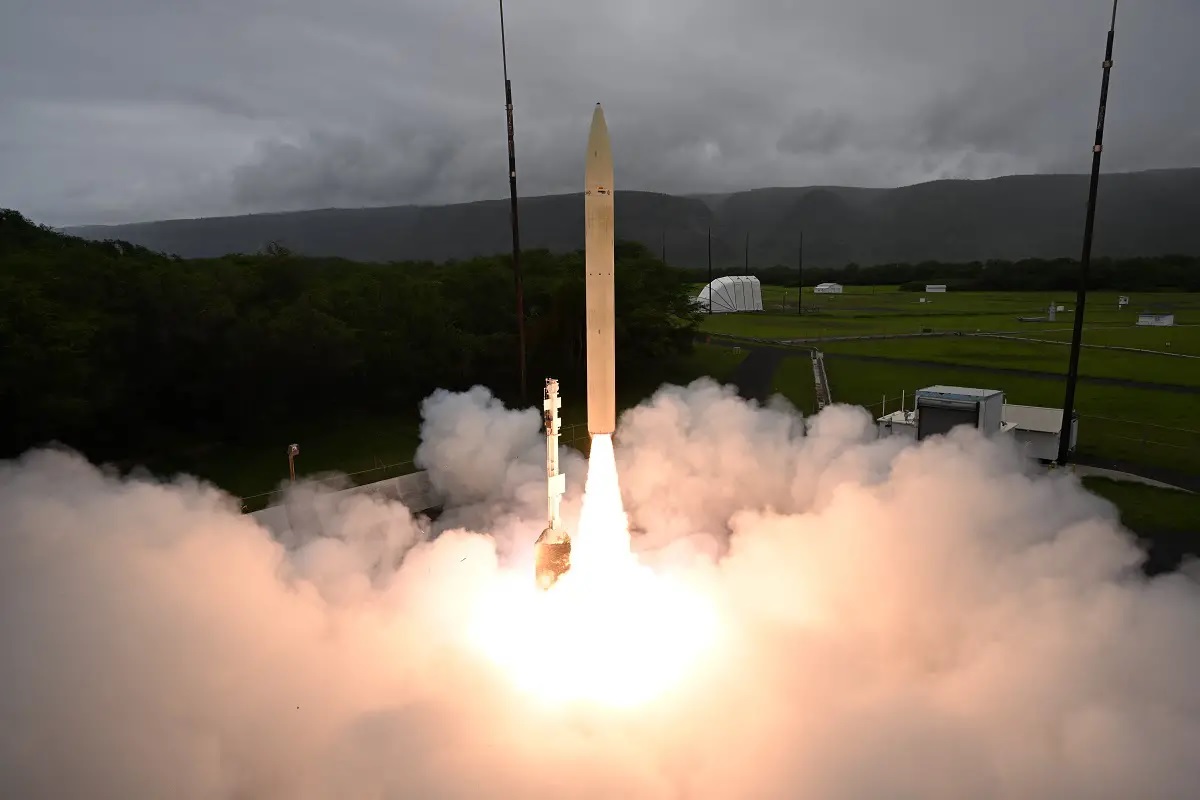 Successful Hypersonic Missile Test by U.S. Department of Defense
Successful Hypersonic Missile Test by U.S. Department of Defense
-
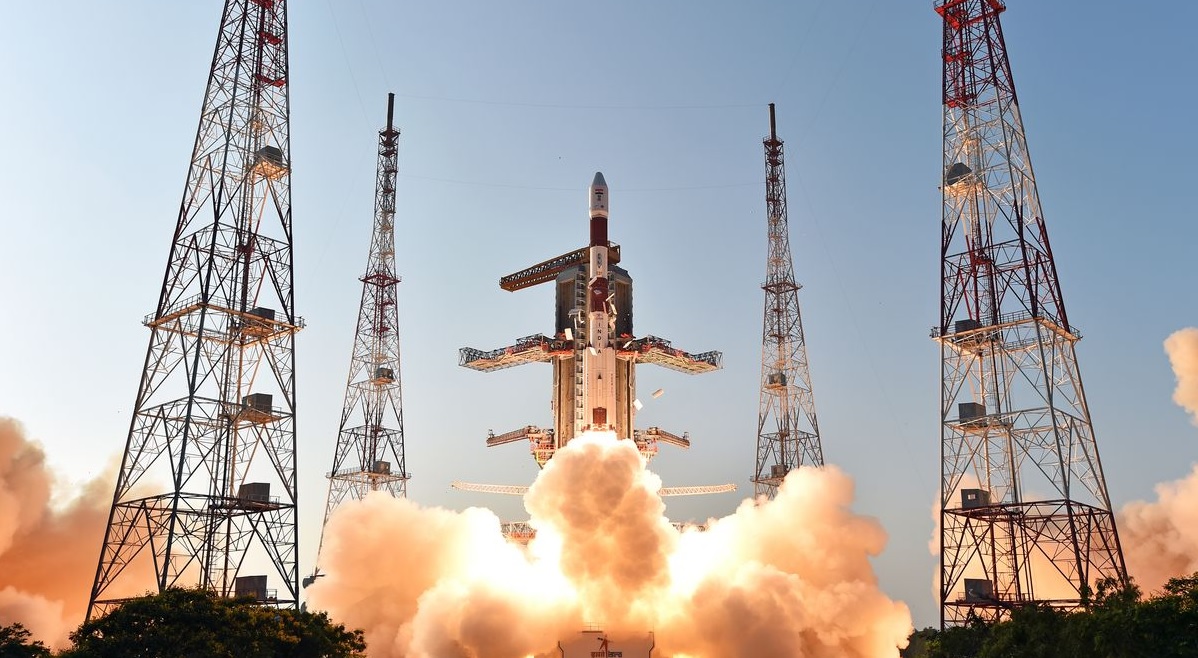 Isro Draws up Ambitious Plan for 2024, says will Launch at Least 12 Missions
Isro Draws up Ambitious Plan for 2024, says will Launch at Least 12 Missions
Top Trending in 4 Days
-
 Russian Scientists Develops Cancer Vaccine, will Distribute Free from 2025 in Russia
Russian Scientists Develops Cancer Vaccine, will Distribute Free from 2025 in Russia
-
 Ukraine Becomes First to Deploy Laser Weapon ‘Tryzub’ in Drone Defense Push
Ukraine Becomes First to Deploy Laser Weapon ‘Tryzub’ in Drone Defense Push
-
 Lockheed Martin Unveils Astris AI to Drive Secure and Scalable AI Solutions
Lockheed Martin Unveils Astris AI to Drive Secure and Scalable AI Solutions
-
 Russia’s ‘Kalinka’ System Threatens Starlink: A Major Setback for Ukraine and Elon Musk’s SpaceX
Russia’s ‘Kalinka’ System Threatens Starlink: A Major Setback for Ukraine and Elon Musk’s SpaceX
-
 Zuchongzhi 3.0 vs. Google’s Willow: Chinese Quantum Computer Matches U.S. Rival in the Race for Superiority
Zuchongzhi 3.0 vs. Google’s Willow: Chinese Quantum Computer Matches U.S. Rival in the Race for Superiority
-
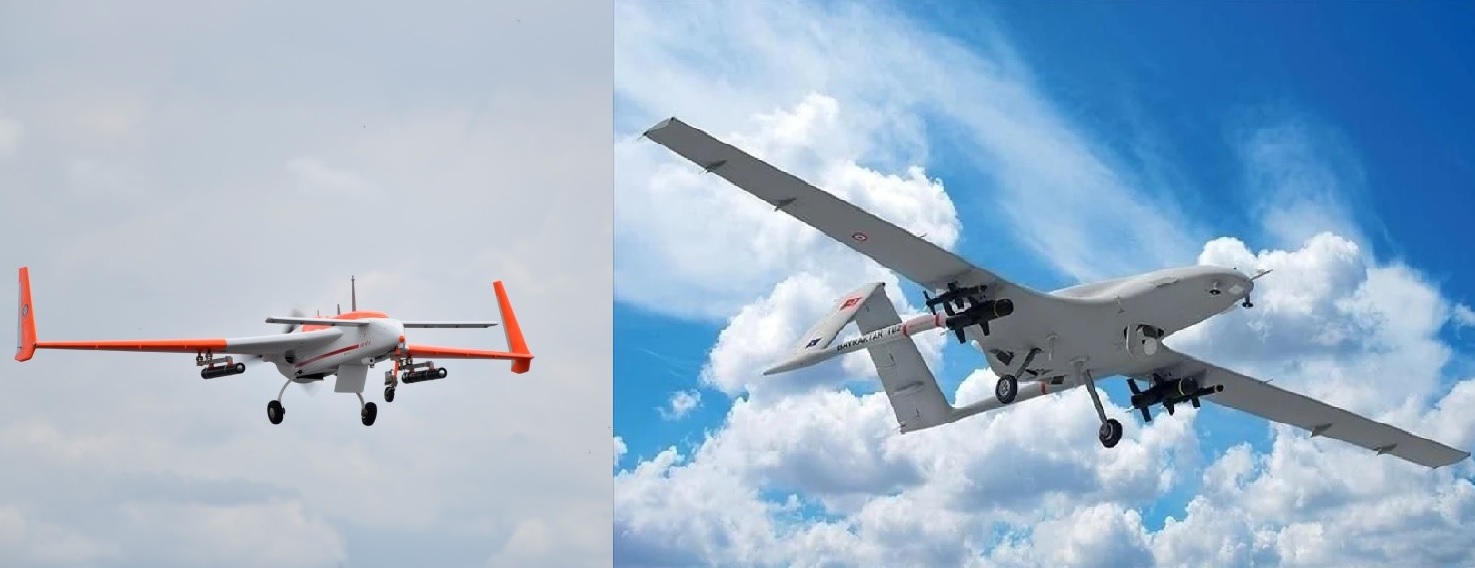 SRUAV-Weaponised vs Bayraktar TB2: A Detailed Comparison of India’s and Turkey’s Armed Drones
SRUAV-Weaponised vs Bayraktar TB2: A Detailed Comparison of India’s and Turkey’s Armed Drones
-
 Russian General Igor Kirillov Killed in Moscow Bombing
Russian General Igor Kirillov Killed in Moscow Bombing
-
 Pentagon Report: China Stations 120,000 Troops, Tanks, and Missiles Near Indian Border
Pentagon Report: China Stations 120,000 Troops, Tanks, and Missiles Near Indian Border
